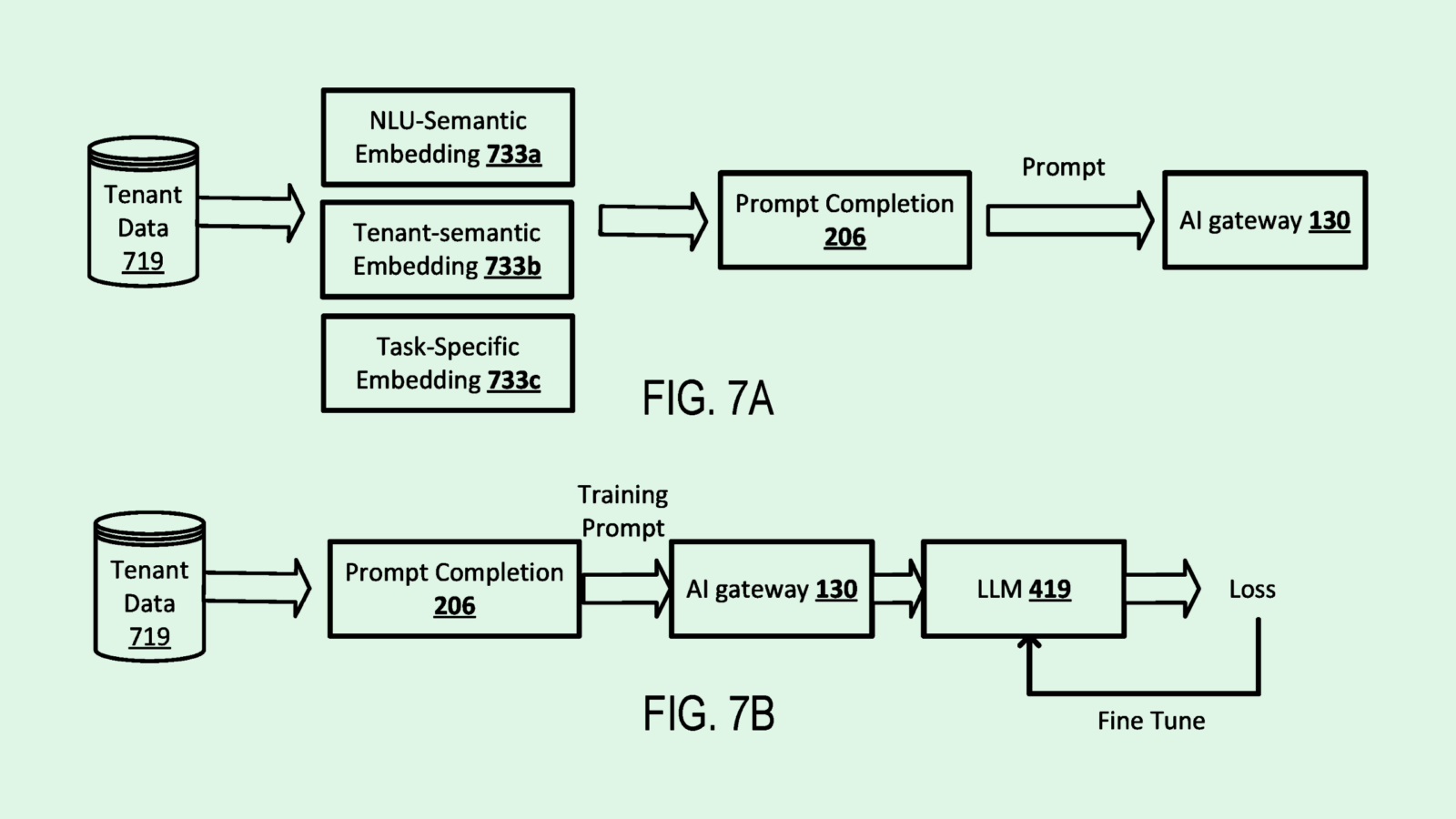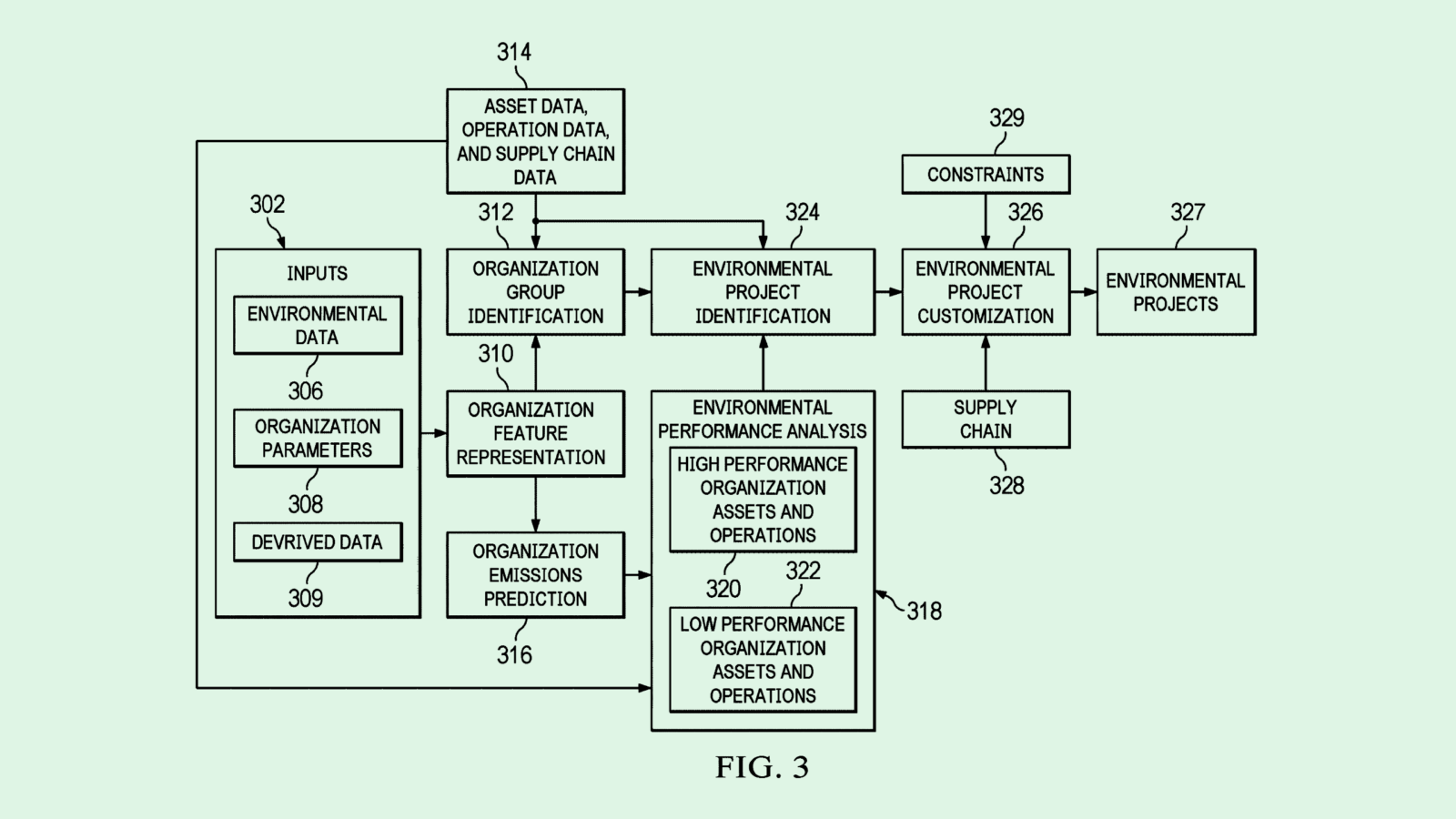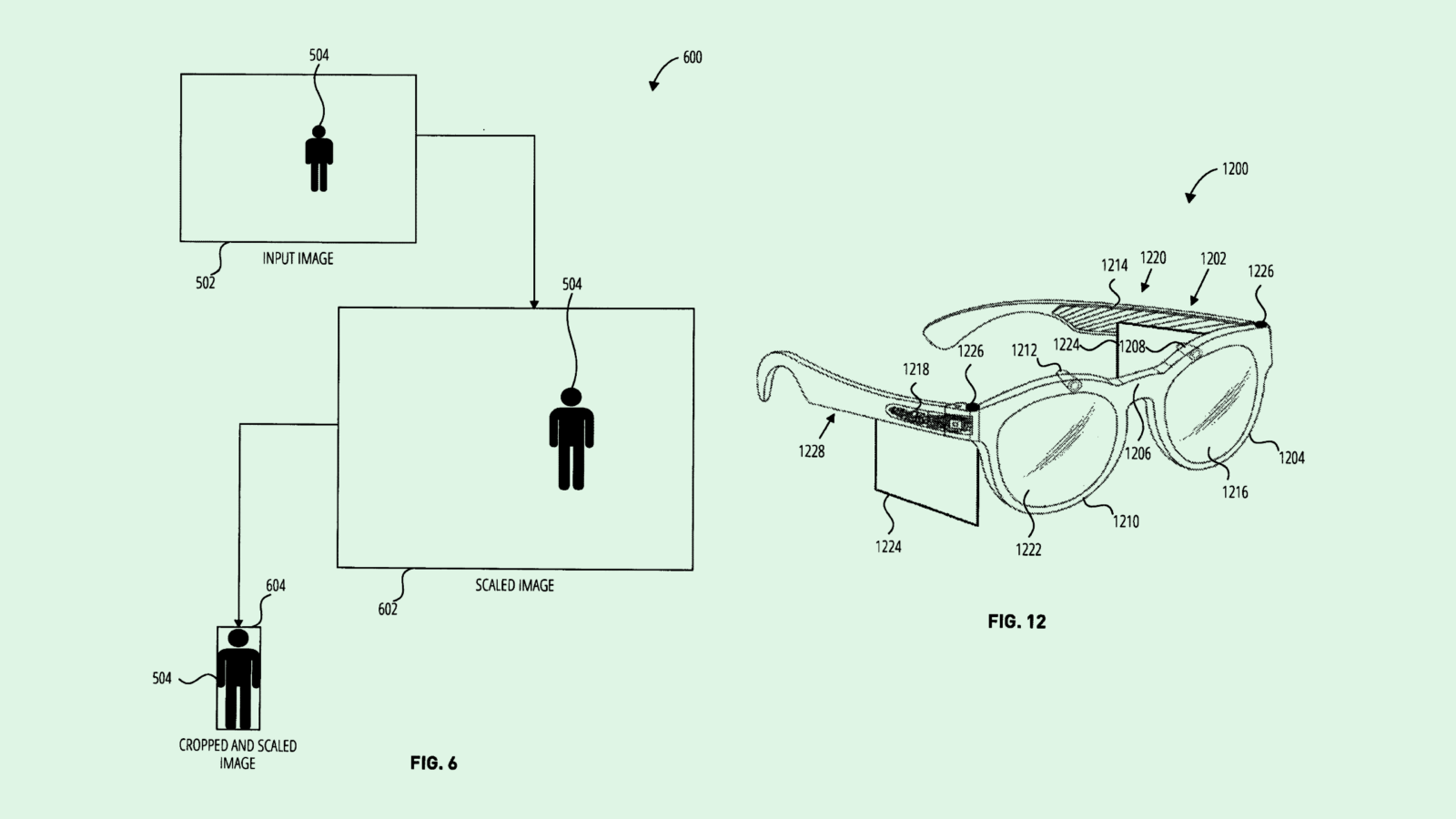Happy Monday and welcome to Patent Drop!
Today, Salesforce’s recent patent for customizable models highlights the company’s vision of personalized agents as the future of AI. Plus: IBM may want to help businesses reach net zero, and Snap wants to keep smart glasses from burning out.
Before we jump into today’s newsletter, a quick word from our sponsor: Welcome to the modern age, where email inboxes are inundated with unsolicited “discounts” and every other phone call reads “Potential Spam.” A big source of this type of junk solicitation is attributable to data brokers, who wreak havoc on our digital privacy by mining and selling personal information to whoever will pay. The good news is – you can reclaim your privacy (and peace) with Incogni.
Patent Drop readers can get 55% off by entering code TDU55 at checkout.
Now, let’s take a look.
Salesforce’s Customized AI
Salesforce wants AI models to work for you, specifically.
The tech firm filed a patent application for systems for “building a customized generative artificial intelligent platform.” Salesforce’s filing details ways to use a general, foundational AI model and personalize it to individual businesses’ needs.
“Machine learning systems have been widely used in building automatic chatbots,” Salesforce said in the filing. “However, training and deploying a neural network model may be costly and time consuming.”
To break it down, Salesforce’s tech would allow businesses to easily design AI-based applications specifically for their needs, as well as customize a model’s generative capabilities by feeding it relevant and specific prompts.
To better fit a company’s needs, this tech leverages an organization’s internal data — i.e., customer relationship management data — so it can more accurately answer requests and complete tasks. This system can work in tandem with commercially available AI models, such as OpenAI’s GPT, or internal models to maintain data privacy.
Salesforce’s framework can also switch between different AI model providers through one standard interface, making it easier to utilize different models for separate tasks without complicated integrations. This allows businesses to use the best model for any given context with little technical fuss.

Personalization is the next big thing in AI — at least, if Salesforce has anything to say about it. Last week at Dreamforce, the company’s annual tech conference, CEO Marc Benioff proclaimed that personalized AI agents — without needing significant technical expertise — will be the “the third wave of AI.”
This followed the announcement of its new service Agentforce, a productivity tool designed for sales, marketing, and customer service. “I don’t think you can DIY this — you want a single, professionally managed, secure, reliable, available platform,” Benioff said at the event.
And it makes sense why Salesforce is going in the direction of personalized, seamless AI, said Bob Rogers, Ph.D., the co-founder of BeeKeeperAI and CEO of Oii.ai. In enterprise contexts, serious friction or even just a “few bad results” can make clients turn away from a service entirely, he said.
“It’s very hard to adopt generic AI tooling in these contexts because of privacy and safety and, frankly, just accuracy,” said Rogers.
Though companies like Google, Microsoft, and OpenAI have largely taken up the spotlight in the AI market, Salesforce has long been an “unsung hero of AI,” said Rogers. The company isn’t building massive, foundational models; its focus has largely been on bringing AI to the “day-to-day life of individuals in enterprise,” said Rogers.
Einstein, its umbrella of personalized generative AI tools, was a “very good effort to create low-code AI customization,” said Rogers. Agentforce seems to be the next iteration of this vision. “[Salesforce] has been bringing AI to the people in meaningful ways for a long time,” said Rogers.
Remove Your Social Security Number From the Internet
Have you ever Googled yourself and been shocked by the amount of personal information that can be gathered with a simple web search? Blame it on data brokers – shady outfits that are making a business of collecting and selling your personal information to the highest bidder. Or, more likely, bidders!
Our friends at Incogni know that the internet is no place for your home address, SSN, or phone number. They are here to help you fight back by hunting down your sensitive data and scrubbing it from the internet.
Protect yourself from identity theft, robo calls, or scammers attacking your credit.
Take action now – enter code TDU55 at checkout to grab 55% off Incogni today.
IBM’s Greener Pastures
With AI development eating up tons of power, IBM may be looking for ways to make businesses a little greener.
The tech firm filed a patent application for “net zero acceleration for organizations.” IBM’s system essentially creates a personalized plan of which environmental projects or carbon offsets a company should support based on its specific parameters.
“Organizations are under pressure from investors, consumers, policymakers, and others to disclose greenhouse gas emissions generated by their activities,” IBM said in the filing. “Organizations need technology to measure, track, and reduce emissions while building operational resiliency to the effects of climate change.”
Notably, the filing itself attempts to wrap a software program within a hardware patent by noting that a “number of processor units” are used to perform analysis. However, to put it simply, IBM’s tech evaluates the “environmental performance” of either an organization as a whole or different groups within an organization.
A group’s environmental performance may be calculated using data about emissions or energy usage, as well as efforts that are already being done at the company, such as renewable energy or conservation projects. If the program gives the organization a low score in its environmental performance, it may identify specific projects or initiatives that’ll help that group reach its net-zero goals.
For example, if an organization’s supply chain is causing a lot of emissions, then the system may recommend ways to cut those, or projects to invest in or initiate that fit into that side of the business.

While IBM’s patent is slightly convoluted, it makes sense why the company would want to target this niche: As the tech industry continues to forge ahead with AI adoption, many major companies’ net-zero emissions goals are moving further and further out of reach as their energy bills climb.
These organizations set vastly ambitious environmental goals for themselves in recent years, many of which were likely not feasible in the first place, said Dan Stein, founder and executive director of Giving Green. ”It was probably going to be impossible for them to meet those goals without the AI, and now that the AI has come, it’s only gotten worse.”
Many organizations’ net-zero promises relied on two main factors: reducing emissions to a bare minimum and investing in carbon removal to cut out the rest. While cutting the first 10% of emissions isn’t as difficult, Stein said, making significant cuts becomes “unreasonably expensive.”
As for carbon removal, Stein said, many are relying on the price to drastically drop so the technology can scale. While there’s been some progress, carbon removal costs are still at roughly $600 to $1,000 per ton, and need to dip below $200 to really take off.
Because of this, Stein worries that companies that set these goals will “claim victory using questionable methods,” such as buying carbon credits that are not actually viable. Some may also admit that their goals were unrealistic and start to quietly back away from them.
“What I hope to see is an admission that the bean-counting of net zero is not really getting them where they need to go, and to try [to] take more of a climate benefit maximization mindset,” he said.
Snap’s Bigger Picture
Snap wants to make sure your smart glasses aren’t overworked.
The company filed a patent application for “adaptive image processing” for an augmented reality device. Snap’s system improves the accuracy and energy efficiency of a set of AR glasses by adjusting how these devices process images.
When capturing an image in a set of AR glasses, Snap’s tech first identifies a “region of interest” within that image. The region of interest may be a person or object within the wearer’s field of view, for example. The system then tracks that person or object’s position relative to the rest of the environment.
However, in order to track that person or object properly, the object-tracking tech will often need an image that is cropped to the subject and scaled to a certain size — a process that can be quite “computationally expensive” when performed indiscriminately for every image.
This is where Snap’s innovation comes in: This system dynamically adjusts the “crop-and-scale order” based on the specific needs of each frame. Snap’s tech takes in several other types of data, such as the object’s velocity or the motion of the AR device itself, to adapt image processing needs moment by moment.
The outcome is more accurate object tracking that avoids burning through tons of power via constant on-device image processing.

It’s no secret that Snap is working to be a power player in the nascent AR headset market. The company has filed tons of previous patents related to the tech, including ways to track hand motions to control AR objects, prescription AR glasses, and even mixed-reality contact lenses.
But the company isn’t the only one that sees promise in the market. Google, Samsung, and Qualcomm are working together on their own set of mixed-reality glasses. Meta has long been seeking to build a pair of lightweight AR glasses, and recently extended its partnership with Ray-Ban through 2030 for “fashionable” smart glasses.
And while it’s been a hot minute since Snap has put a new pair of its Spectacles on the market, the company unveiled a set of specs, as well as a new operating system for them, at its annual Partner Summit last week. The glasses, which mark the fifth generation of the company’s Spectacles endeavor, feature a richer and more immersive display as well as a longer-lasting battery.
“It is truly amazing how much capability we packed into this device,” Snap CEO Evan Spiegel said at the event.
Snap, however, is taking a slightly different approach with its Spectacles than competitors. Rather than focusing on a broader audience, the glasses are targeted specifically at developers, similar to the 2021 version of the Spectacles. The company is asking developers to apply to access the glasses, and pay $99 per month to rent a pair for a year.
Extra Drops
- Block wants to make sure you’re the one paying for your shopping spree. The point-of-sale firm filed a patent application for a way to detect “card sharing and fraud.”
- Ford is making sure all the parts are where they should be. The automaker is seeking to patent a way to detect and prevent “vehicle parts theft.”
- Google wants to learn your dialect. The tech giant wants to patent a way to control the “style of large language model(s)” during ongoing dialog.
What Else is New?
- The U.S. Commerce Department reportedly proposed banning Chinese software and hardware components in internet connected vehicles.
- Apollo Global Management has reportedly offered to make a multibillion-dollar investment in Intel as an alternative to a takeover by rival Qualcomm.
- Cloudflare announced plans for a marketplace where website owners can sell their site’s content to AI model developers.
Patent Drop is written by Nat Rubio-Licht. You can find them on Twitter @natrubio__.
Patent Drop is a publication of The Daily Upside. For any questions or comments, feel free to contact us at patentdrop@thedailyupside.com.

